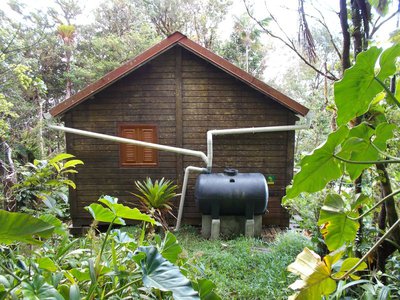
Trois Crêtes from Valley of Grande Rivière
20 points of interest
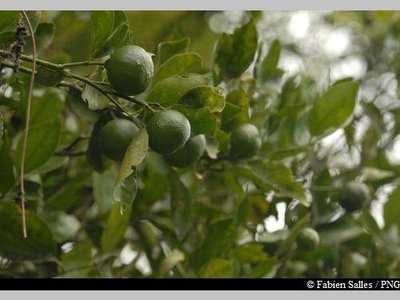
mandarines - Fabien Salles / PNG  Agricultural landscape
Agricultural landscapeThe Creole garden
The path is bordered by farms, some of which have now fallen into disuse. Here you can see plant species that testify to human presence here, fruit trees such as mango and lemon trees, as well as banana and coconut trees.
"Do not be deceived by the overgrowth, which does not allow you to distinguish the individual plants. This Creole garden is not so much the fruit of fantasy as a work of science which understands the needs of light and shade: the fruit trees protect vanilla, bananas, soap wood, wild cherry, while the cocoa trees filter the light for the coffee bushes". Jacqueline Picard, "Parc national de la Guadeloupe", 1999.
 Flora
FloraPachystachys spicata
Pachystachys spicata is member of the Acanthaceae family. It is an ornamental flower.
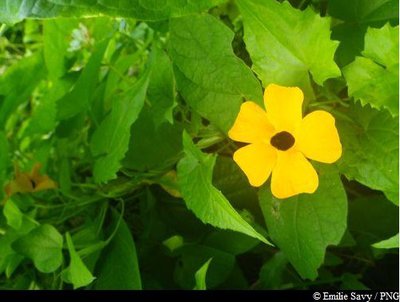
"Suzanne aux yeux noirs" - Emilie Savy / PNG  Flora
FloraBlack-eyed Susan vine
Thunbergia alata is a creeping plant also known as the Black-eyed Susan vine because of its purplish-black centre. Its petals are yellow or white.
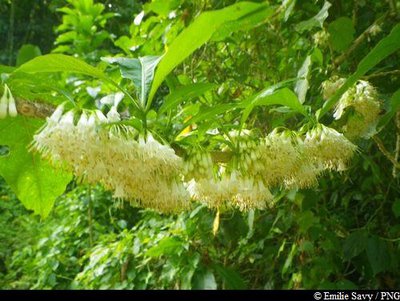
Suriau - Emilie Savy / PNG  Flora
FloraAcnistus arborescens
Acnistus arborescens is a member of the Solanaceae family. It is recognisable for its large clusters of white flowers, which turn into clusters of red fruits.
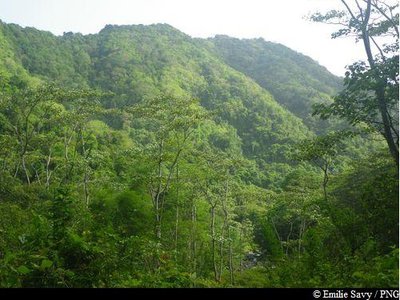
Morne Soldat - Emilie Savy / PNG  Viewpoint
ViewpointCrête du Morne Soldat
Fine views of the Morne Soldat ridge.
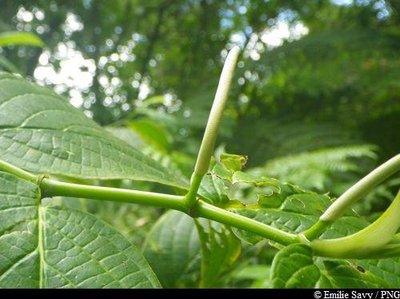
"Queue de rat" - Emilie Savy / PNG  Flora
Flora"Rat's tail"
This name refers to a number of species in the Piperaceae family.
As shrubs or small evergreen trees (ranging from 2-7 metres tall) with black, wart-like bark, rat's tails are a favourite among bats.
 Area of relaxation
Area of relaxationRiver access
Access to the Grande Rivière de Vieux-Habitants.
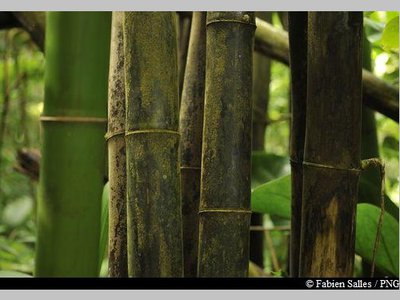
Bambou - PNG  Flora
FloraBamboo
A member of the Poaceae family, bamboo is more closely related to grasses than to trees. Made up of a woody, hollow stalk, its stem grows extremely quickly. It is both a highly resistant and invasive species in Guadeloupe and concerted efforts are being made to put it to best use in crafts and construction.
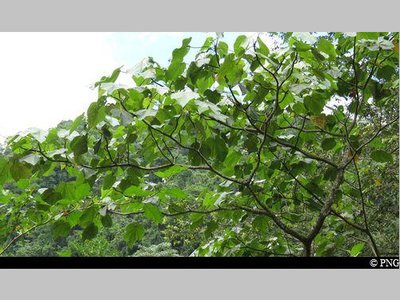
Balsa - PNG  Flora
FloraOchroma pyramidale
Ochroma pyramidale, a member of the Bombacoideae sub-family. A very distinctive tree of the Grande Rivière valley, its fruits form tufts of fuzz (kapok), which were once used for pillows.
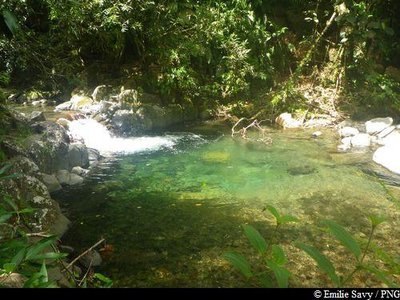
bassin - Emilie Savy / PNG  River and waterfall
River and waterfallPool with resplendent colours
On the ravine just before the waterfall, the pool is a very pleasant spot for a nice quiet swim.
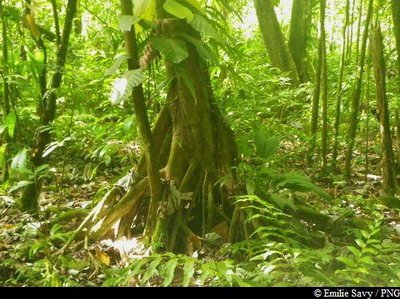
Palétuvier jaune - Emilie Savy / PNG  Flora
FloraSymphonia globulifera
The Symphonia globulifera, more commonly known as the Chewstick tree, belongs to the Clusiaceae family. It is a tree that grows in thick, humid and swampy forests. Reaching up to 25-30 metres in height, it has stilt roots and a yellow latex trunk. Its flowers are bright red petals, with oval fruits that resemble nutmeg and that are yellow when ripe. It wood was one used as timber for houses and its resin was used in boat-making.
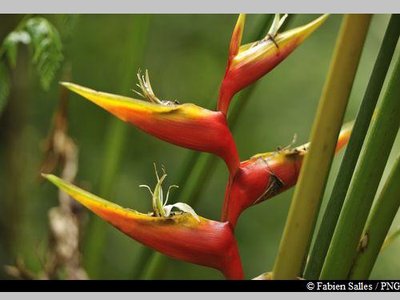
balisiers - Fabien Salles / PNG  Flora
FloraBalisiers
A member of the Musaceae family, Heliconia caribaea is a large grass that is typical of the Lesser Antilles tropical rainforest. A member of the same family as the banana trees, the plant can grow up to 5m high. Its inflorescence resembles a red ear or red ear with yellow trim, sometimes entirely yellow. Its flowers are visible all year round, especially between April and June.
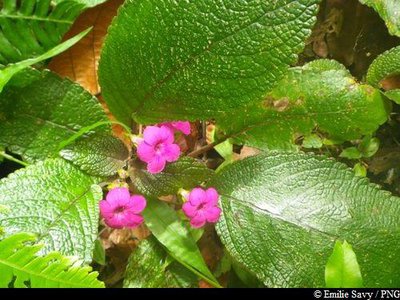
Herbe à miel - Emilie Savy / PNG  Flora
FloraNautilocalyx melittifolius
Nautilocalyx melittifolius is a member of the Gesneriaceae family. It is a small, pink-purple coloured flower.
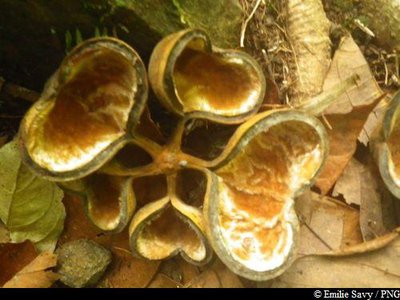
Mapou baril - Emilie Savy / PNG  Flora
FloraMapou baril
Mapou baril (Sterculia caribea) is endemic to the Lesser Antilles. Depending on the age of the plant, its leaves can differ in size. Its flowers appear in the form of a bunch of small yellow and pink bells. It produces quite distinctive fruits that cluster together generally in groups of four or five. They are lined with urticating bristles on the inside.
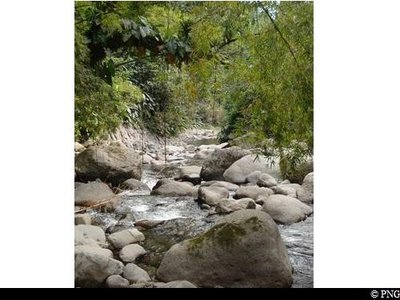
lieu propice pour une pause ... - PNG  Area of relaxation
Area of relaxationA short break
A nice spot for a break with a view of the Grande Rivière de Vieux-Habitants.
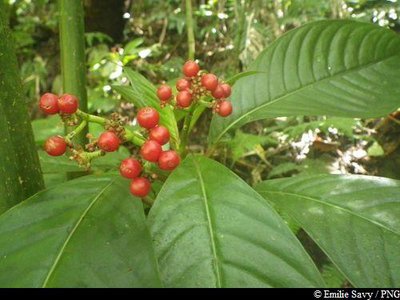
Café-Bois - Emilie Savy / PNG  Flora
FloraPsychotria uliginosa
Psychotria uliginosa is a member of the Rubiaceae family. It is a rather rare plant in Guadeloupe, but can be seen in Basse Terre at Grand Etang or at Monts Caraïbes.
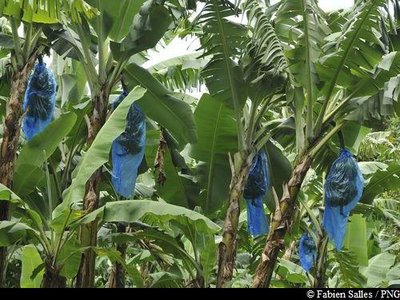
champs de bananiers - Fabien Salles / PNG  Flora
FloraBanana trees
A member of the Musaceae family, banana trees are in fact giant plants, sometimes growing to around ten metres tall. It has no trunk as such, but overlapping leaves that keep it upright. It is similar to giant leek plants. It is a perennial plant with large leaves that are made up of 80% water. The flowers first point towards the sky before spreading downwards. Banana cultivation is an integral part of the economy in Guadeloupe. Its leaves are used in local handicrafts, such as in hat making.
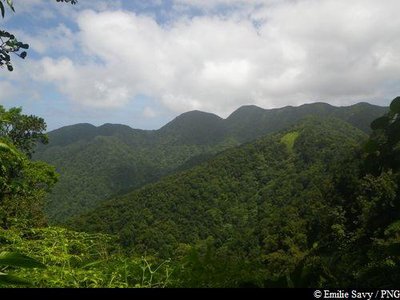
vue sur la Vallée de Beaugendre - Emilie Savy / PNG  Viewpoint
ViewpointVallée de Beaugendre
Opening on to Vallée de Beaugendre and Piton de Bouillante (1088 metres)
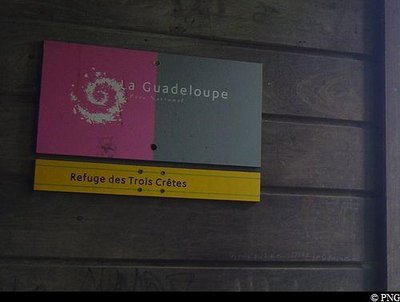
refuge des Trois Crêtes - PNG  Mountain shelter
Mountain shelterRefuge des Trois Crêtes
The Trois Crêtes bivouac (shelter) has room for around 10 people to sleep in the heart of the rainforest.
It is strongly recommended that you bring your floor mat or hammock (plus fasteners), because there are only wooden bunks available on site.
N.B. The shelters have no running water or electricity available. They are not supervised and do not include a cleaning service. Please leave them clean and tidy !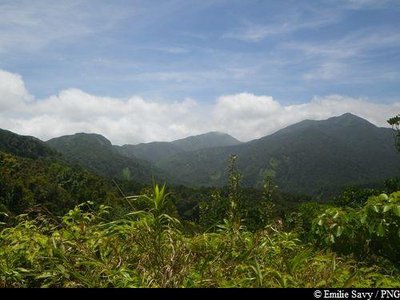
vue depuis le sommet des Trois-Crêtes - Emilie Savy / PNG  Viewpoint
ViewpointShow-stopping views
The main attraction : the breathtaking views ! Panoramic, 360-degree views of the surrounding peaks.
Description
Hiking trail colour: yellow
Take the old paved road. It heads through the valley, right through the heart of the farms which are mostly no longer operational. Cross the small river and keep going. Follow signs for "Trois Crêtes", turning right. Then cross the ford, which is used for water catchment. On the opposite bank, take the trail heading right. At the junction, turn left towards "Three Peaks". The trail runs along the river. Follow the signs to not lose track. Go past the wooden stairs. The path branches off to the left before climbing up towards the Corossol ridge. Pay attention to the slopes. At the intersection, turn right to reach the shelter. When you reach the shelter, a few metres further on the trail the views can be magnificent on a clear day. You can spend the night at the shelter, or continue towards Piton de Bouillante or even rejoin the Merwart trail (routes will be available online later).
If not, turn around to return to the same route. You may also wish to pay a visit to La Grivelière house (see opening hours).
Another option is to come down from the ridge of the Vallée de Beaugendre (see info "Trois Crêtres from la Vallée de Beaugendre").
- Departure : Valley of Grande Rivière, Vieux-Habitants
- Arrival : Valley of Grande Rivière, Vieux-Habitants
- Towns crossed : Vieux-Habitants
Altimetric profile
Recommandations
This route is hazardous when it is raining. Do not plan a hike if it has been raining the day before or if bad weather is forecast. If water levels are rising, do not try to cross the river. Wait until they return to normal.
Extra care should be taken in this natural environment, as Guadeloupe is prone to natural risks. For the benefit of all hikers, responsible behaviour is requested.
Please note : the parking and swimming areas are not supervised.
Information desks
Headquarters of the National Park of Guadeloupe
Montéran, 97120 Saint-Claude
The reception and shop are open to the public :
- Monday, Tuesday and Thursday : 8 am to 12.30 pm and 2 pm to 5 pm.
- Wednesday : from 8 am to 1 pm.
- Friday : 8 am to 12.30 pm.
Services : reception, shop, toilets, free parking. Building accessible to people with reduced mobility.
Localisation GPS : Lat: 16,01634 N - Lng: 61,70753 W.
Access and parking
GPS coordinates of the start point : Lat : 16,07271 N - Long : 61,72853 W.
At Vieux-Habitants, head for "La Grivelière" in Valley of La
Grande Rivière. Keep going until the end of Route RD27 and leave your car at La Grivelière parking area.
Parking :
More information
Source
Report a problem or an error
If you have found an error on this page or if you have noticed any problems during your hike, please report them to us here:


